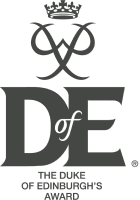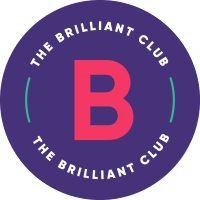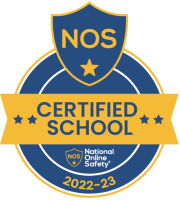This subject is part of the Faculty of Arts and Creative Technologies
Our Head of Faculty is
Mr R Down rdown@tcat.school
Our subject teacher and email address is
Mr R Down rdown@tcat.school
Our subject intent
Is to learn theory such as how cars work, what materials are used in their construction and how these may be recycled or converted at end of vehicle life. You will learn how to work safely in practical situations and understand about health & safety legislation. In the practical elements of this course you will use workshop processes to create simple tools then learn how to service brakes, suspension and steering components. You will have the opportunity to remove, assess the condition of and replace engine components.
Pupils may also be offered the chance of short work placements which provide experience working in the automotive trade.
Curriculum Subject Offer
Year 10 Automotive Studies
Subject intent
In Key Stage 3 you learnt about designing and creating products for people to use by applying a variety of skills in working with wood, metal and plastic. You also learned about materials and mechanisms and developed practical skills in using tools and equipment safely.
Although this vocational course does not follow directly from KS3 DT, there are many transferrable skills and you will now build on the knowledge you have of materials and their uses.
During year 10 this course you will learn theory such as how cars work, what materials are used in their construction and how these may be recycled or converted at end of vehicle life. You will learn how to work safely in practical situations and understand about health & safety legislation. In the practical elements of this course you will use workshop processes to create simple tools then learn how to service brakes, suspension and steering components. You will have the opportunity to remove, assess the condition of and replace engine components.
Topic Breakdown
| Half term 1 | Half term 2 | |
| Autumn | Health & safety including risk assessment
Tool making Routes into employment in the automotive industry |
Vehicle emissions
Environmental impacts of waste disposal End of vehicle life disposal/recycling Tool making and tolerances |
| Spring | Engineering tools / fasteners and characteristics
Handling engineering waste How braking systems work Removing / refitting braking systems and checking operation |
Health & safety recap inc. PPE
Braking systems recording of learning and completion of workbook Introduction to engine components including removing and refitting |
| Summer | Removing / refitting steering and suspension components
Writing up workbook sections for assessment |
Removing /refitting steering and suspension components
Writing up workbook sections for assessment Disposal of waste material including potentially hazardous materials Revision of learning |
You will be assessed through completion of workbook tasks relevant to each stage of the course and though regular tests at the end of each unit of work.
Automotive Studies full Scheme of Work - Year 10
Year 11 Automotive Studies
Subject intent
During this course you will learn theory such as how cars work, what materials are used in their construction and how these may be recycled or converted at end of vehicle life. You will learn how to work safely in practical situations and understand about health & safety legislation. In the practical elements of this course you will use workshop processes to create simple tools then learn how to service brakes, suspension and steering components. You will have the opportunity to remove, assess the condition of and replace engine components.
Students may also be offered the chance of short work placements which provide experience working in the automotive trade.
In year 10 you learnt about tool making and working within tolerances, health and safety including legislation relevant to work in the automotive industry and how to operate in the school workshops. You learned about some of the many systems incorporated into modern cars and how to remove, assess the condition of and replace braking system components, engine components and how to work on steering and suspension systems.
During Year 11 you will learn about vehicle electrical systems and how they operate including how to work on these components safely. You will learn how to identify components including the correct rating of bulbs and fuses for various purposes and how to trouble shoot issues with electrical systems on vehicles. You will learn about battery types and their application including those used in hybrid or EVs.
Topic Breakdown
|
|
Half term 1 |
Half term 2 |
|
Autumn |
Health & safety including legislation relevant to electrical work
Tool making (extended challenge) Vehicle battery types and application Manufacturers procedures for fitting electrical components Writing up of learning in workbook for assessment Creating tester boards for electrical components |
Tool making
Lighting systems for automotive vehicles Assembling and testing circuits CAD drawings Fault finding flow-charts and trouble shooting |
|
Spring |
Safety equipment and waste disposed relevant to electrical work
Workbook tasks Revision and preparation for end of course test |
Extended tasks
Workbook tasks Revision and test preparation |
|
Summer |
n/a | n/a |
You will be assessed through completion of workbook tasks in line with success criteria and through regular tests at the end of each unit. In addition, you may take the final end-of-course test twice if you do not achieve the desired mark on the first attempt.
Automotive Studies full Scheme of Work - Year 11
Within each subject we have our own specific personalised marking and feeback policy.
|
Arts and Creative Technology |
||
|
|
KS3 |
KS4 |
|
Verbal dialogue |
Teachers circulate with purpose, checking pupils’ work and collecting information on whole-class strengths, skill development, errors, misconceptions, knowledge gaps etc. The teacher adjusts their lesson accordingly. |
Teachers circulate with purpose, checking pupils’ work, providing feedback if appropriate and collecting information on whole-class strengths, errors, misconceptions, knowledge gaps etc. The teacher adjusts their lesson (or SOW) accordingly. |
|
Self/peer assessment |
Verbal or written feedback through strengths/targets and annotations. If written, peer and self-assessment should be completed in blue pen. |
Verbal or written feedback through strengths/targets and annotations. If written, peer and self-assessment should be completed in blue pen. |
|
Whole Class Feedback |
When pupils complete extended pieces of work, teachers will look through a sample of work from each class they teach and note pupils’ strengths and targets. Teachers will then use this information to provide whole class feedback on what pupils are doing well and how pupils can improve their work further. As this type of marking involves the teacher looking at a sample of work, the teacher will use a rotation system to ensure that the work of all pupils is looked at on a regular basis. Where books are not used, verbal responses from pupils or video evidence can be used. |
When pupils complete extended pieces of writing, teachers will read through a sample of books from each class they teach and note pupils’ strengths and targets. Teachers will then use this information to provide whole class feedback on what pupils are doing well and how pupils can improve their work further. As this type of marking involves the teacher looking at a sample of books, the teacher will use a rotation system to ensure that the books of all pupils are looked at on a regular basis. Where books are not used, verbal responses from pupils or video evidence can be used. |
|
Written comments |
Teachers within the department will either: 1. Check through the work of all pupils and use a marking code to indicate the strengths and targets of the work. The marking code will be shared with all pupils and pupils will be given precise instruction about how to improve their work. OR 2. Read through the work of all pupils and write a strength comment and target comment at the end of the piece of work. OR 3. Record evidence of work through suitable media, providing pupils with a strength and target comment relevant to the piece of work. SPAG Teachers will identify where pupils make errors in their spelling, punctuation and grammar and pupils will be given time in lessons to make corrections (by circling errors where SPAG mistakes appear). If several pupils in a class are making the same spelling, punctuation or grammar error then the teacher will address this with the class. |
Teachers within the department will either: 1. Read through the work of all pupils and use a marking code to indicate the strengths and targets of the work. The marking code will be shared with all pupils and pupils will be given precise instruction about how to improve their work. OR 2. Read through the work of all pupils and write a strength comment and target comment at the end of the piece of work. OR 3. Record evidence of work through suitable media, providing pupils with a strength and target comment relevant to the piece of work.
SPAG Teachers will identify where pupils make errors in their spelling, punctuation and grammar and pupils will be given time in lessons to make corrections (by circling errors where SPAG mistakes appear). If several pupils in a class are making the same spelling, punctuation or grammar error then the teacher will address this with the class.
Written feedback forms part of the module feedback process in vocational courses. This is intended to be summative for that unit/module but formative toward improvement in the following unit/module. |
|
Frequency of feedback |
Live feedback and responsive teaching will take place in most lessons where pupils have been asked to complete extended pieces of work. * Whole-class feedback will take place once a week. Peer/self-assessment When deemed to be the most effective method of assessing work produced in lessons Written comments will take place after between 10 and 15 lessons (around twice per term), as appropriate for the pace of the class. OR Once per module/rotation.
|
Live feedback and responsive teaching will take place in most lessons where pupils have been asked to complete extended pieces of writing. * Whole-class feedback will take place once a week. Peer/self-assessment When deemed to be the most effective method of assessing work produced in lessons Written comments will take place after between 10 and 15 lessons (around twice per term), as appropriate for the pace of the class. There may be several lessons where pupils do not write extensively. Instead lesson time will be used to: (for example) read and discuss the musical scores; annotate the text/diagrams; make notes about the set-works; complete short comprehension activities. |
|
Response to feedback |
When directed after marking/whole class feedback, pupils will be expected to make a response in blue pen OR Make media application of their feedback in their ongoing work. In some instances, pupils will be expected to put the title DIRT and either re-draft an entire piece of work or a section of the piece of work according to the teacher’s instructions. In other instances, pupils will be expected to apply their feedback in the form of transferable skills applied in a new task. This would be done in blue pen when relevant. In further instances, pupils may be asked to answer questions posed by the teacher. Responses to spelling mistakes include writing out misspelled words such as subject specific vocabulary or key words. |
When directed after marking/whole class feedback, pupils will be expected to make a response in blue pen OR Make media application of their feedback in their ongoing work. In some instances, pupils will be expected to put the title DIRT and either re-draft an entire piece of work or a section of the piece of work according to the teacher’s instructions. In other instances, pupils will be expected to apply their feedback in the form of transferable skills applied in a new task. This would be done in blue pen when relevant. In further instances, pupils may be asked to answer questions posed by the teacher. Responses to spelling mistakes include writing out misspelled words and listening to explicit teaching of spelling (etymology etc.). |
|
Summative assessment |
1 x formal assessment each half term or module rotation. A piece of extended work which is marked using comparative judgement on the No More Marking platform. Band boundaries are applied to the assessments once judged, as stated in the SOW. |
1 x formal assessment each half term. A piece of extended writing which is marked using comparative judgement on the No More Marking platform. Band boundaries are applied to the assessments once judged. This might be a practical piece or some written work, as stated in the SOW. |






